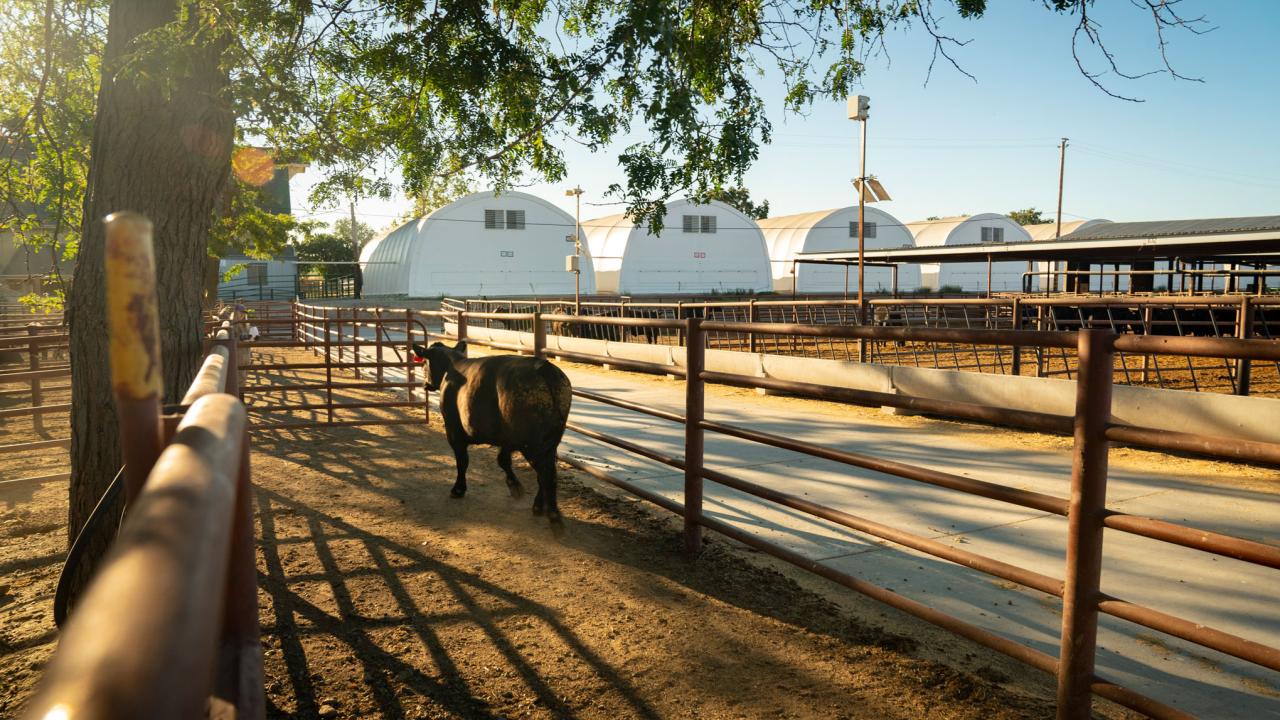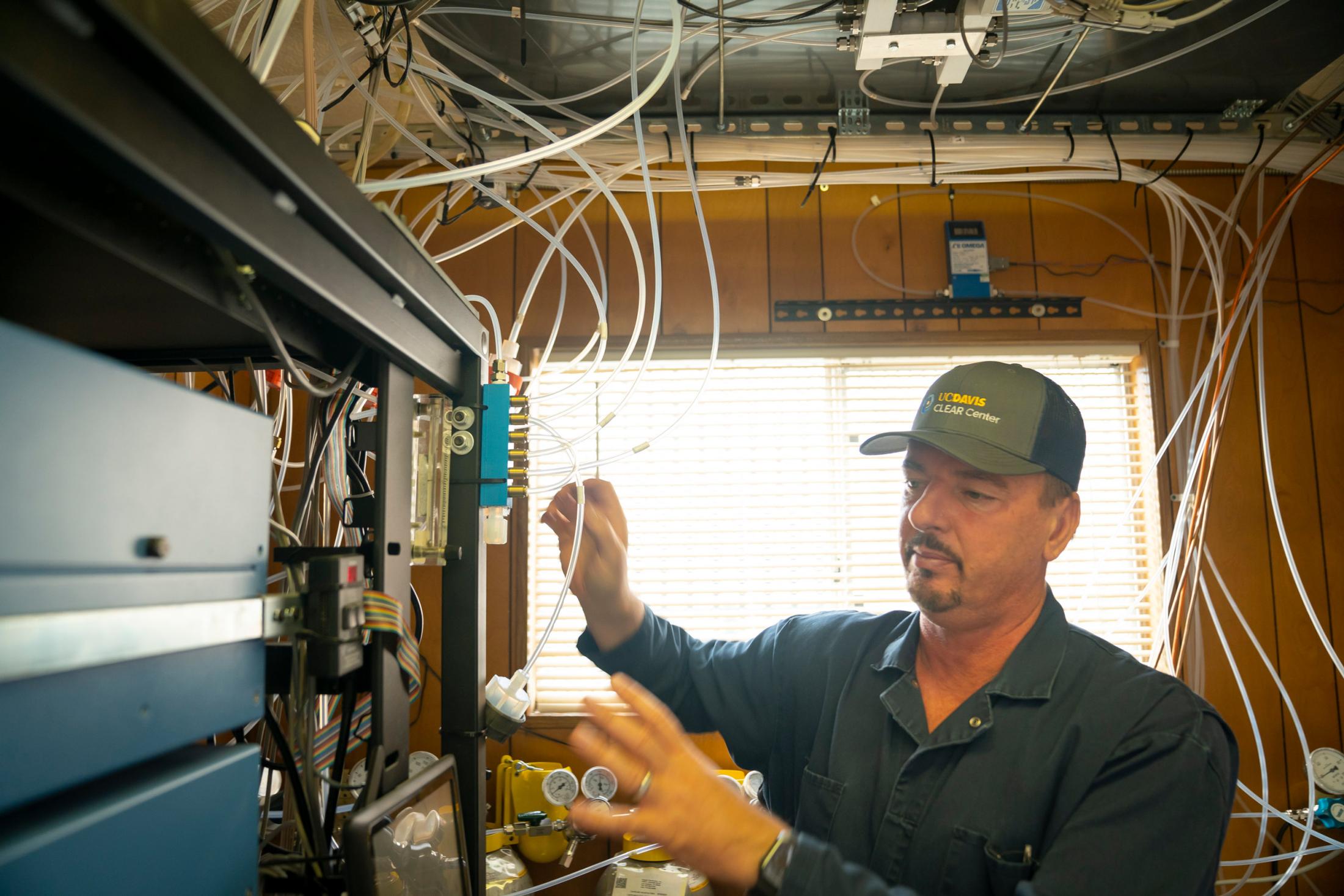
Full disclosure: I work to reduce the footprint of animal agriculture
My response to The New York Times and Greenpeace articles on CLEAR Center Funding
By Frank Mitloehner
There’s a shocking revelation out there, and I am at the heart of it. Are you prepared for this?
Animal scientists work with animal agriculture. That’s it. That’s the exposé, the conspiracy that so many activists and journalist want to share with you.
Oh, if you want more, try this on for size: Agriculturists work together to be more sustainable.
If you work in agriculture, these statements probably aren’t surprising. In fact, it would likely be concerning if that were not the case. Sustainability issues are too big to be tackled in in silos – metaphorically speaking, of course. One way the sector has come together to further sustainability is through the CLEAR Center.

BioBeef Blog: New York Times Reporting on Agriculture
Dr. Alison Van Eenennaam, a Professor of Cooperative Extension in the field of Animal Genomics and Biotechnology in the Department of Animal Science at University of California, Davis writes about the New York Times' approach to covering agriculture and university research in light of the recent Times' article about Dr. Frank Mitloehner.
As we’ve stated on our website, the CLEAR Center receives funding from IFEEDER, which is the public charity arm of the American Feed Industry Association. We also have an advisory board made up of representatives from organizations across the industry, including Elanco, Cargill and Zoetis. It is unique to have a group such as this engaged in sustainability efforts. This board allows us to share our research and extension work directly with the companies that can use the solutions and information. It also allows the work done in my lab to go beyond journals, the classroom and academia, and actually reduce emissions. We also collaborate with individual ranchers and farmers, often conducting research directly on farms.
I am transparent about my collaboration with the livestock industry. My research lab receives grants to conduct research for the agricultural sector, as well as the public sector. In fact, I wrote an entire blog, breaking down private versus public funding here. If you follow me on Twitter, you know that I engage with the people I’m working to help become more sustainable. It’s no secret – nor should it be.
The work I’m contracted to do by government agencies typically is centered around quantifying emissions from various sources or technologies. We recently completed a project funded by the California Air Resources Board in which we investigated how various manure management technologies on dairies can reduce methane emissions. If we are asked to look at innovative solutions such as feed additives, those projects are usually sponsored by the private sector. Funding for the CLEAR Center has largely supported our extension efforts to share science with the animal agriculture sector, government and the public. If we are unable to tell people about our work, then it will not have any impact.
I am proud to work with farmers, ranchers and organizations that feed us, just as I’m proud to say that I have a role in helping improve the environmental impact of the food they produce. I can’t help but be sensitive to the fact that those in agriculture are portrayed as bad guys in many articles criticizing industry efforts aimed at sustainability. Producing food is tough work, and producing animal-sourced foods as well as we do here in the United States is an impressive feat.
I don’t think our farmers and ranchers deserve to be harassed for their efforts. They are 1% of the population in the U.S., but they provide food for 99% of the population. I also don’t believe the best way to help them become more sustainable is to bash them for providing food. Maybe that is what our critics would like from us … to denounce animal agriculture as a lost cause. However, this integral part of the agricultural sector provides necessary nutrient-dense foods for most of the global population.
My job as a professor and cooperative extension air quality specialist is to work with members of the industry to improve the environmental performance of the food they grow. I don’t mean that figuratively; it’s written in my job description at the University of California, Davis. You can read it here.
This past summer I received public records requests from Greenpeace on my funding and communication with IFEEDER. We understand the perspective Greenpeace has on animal agriculture, and regardless, gave them what they requested without hesitation. However, I was surprised to see that The New York Times found about the request and sought the same public records. Clearly the activist organization is well connected.
As a result, The Times and Greenpeace published coordinated hit pieces on me and the CLEAR Center. I can’t describe it any other way. It is not surprising that the usual cast of animal agriculture and CLEAR Center naysayers are quoted in The New York Times and Greenpeace. Unsurprisingly, there is a lack of agriculture researchers quoted.
Of course, this is not the first time this type of article has been written about me. Last year, Undark published a negative article on me and my collaboration with the sector. That writer is now the managing editor of Sentient Media, a publication with a prominent bias against animal agriculture. The irony is not lost on me that I am tarnished as being biased for working with the livestock sector, but not the writer working at a publication with a clear agenda.
Most of our harshest critics have never met me or spoken to me. They don’t know the members of our small team. They know precious little – if anything – about the work we are doing. They are simply people who delight in making the assumption that cooperating with members of a sector must spell dishonesty and a breach of ethics. I wonder if the same is true of those who are invested in veganism.
While people are taking shots at us, we’re pleased to be doing the work and conducting the research to reduce emissions and increase the food supply we need to sustain an exploding global population. We’re so much more than keyboard warriors shouting on social media, but we are all too often taken hostage by their attacks and their demands.

I find it disheartening to be accused of wrongdoing by working with the livestock sector. Who else is supposed to fund research to mitigate emissions from animal agriculture? If Greenpeace’s leaders are interested in that, I’d love to talk about it, but I don’t think it will happen. In the meantime, I’ll continue to work with the sector to help reduce its environmental footprint.
We have so much good and promising news to share, and yet, our objective isn’t to get good press. People want us to go on record that animal agriculture should fade away or be significantly reduced, but that’s not our charge or our place. Our mission is simply to reduce animal agriculture’s impact on our climate and environment, and to do that, we must work with the people who are raising the food that feeds us all.
So, while the stories are churned out, we’re making progress improving the environmental impact of animal agriculture, in large part because we have many seats at our table. I’m unapologetic about that. Even more, I’m proud of it.
If I get weary, it’s because I continue to answer the same questions for the story that keeps getting written. The New York Times is simply the latest in a long and steady stream of media outlets that think they’re on to something.
To them I say: Come and visit us. See the lab. Meet our students and colleagues. Talk to the farmers and try to understand – as we do – how committed they are to the important role they play in simultaneously feeding the world and safeguarding our planet.
I think you would be surprised by what you see and hear.
I think you would find a new and better story to tell.
